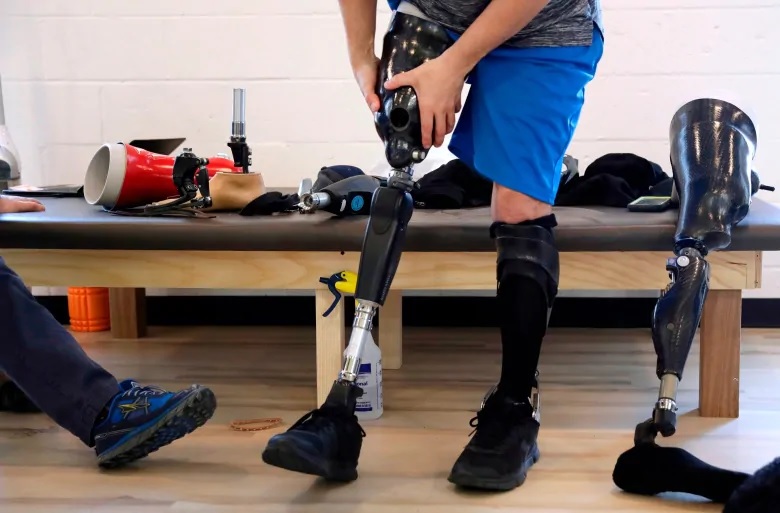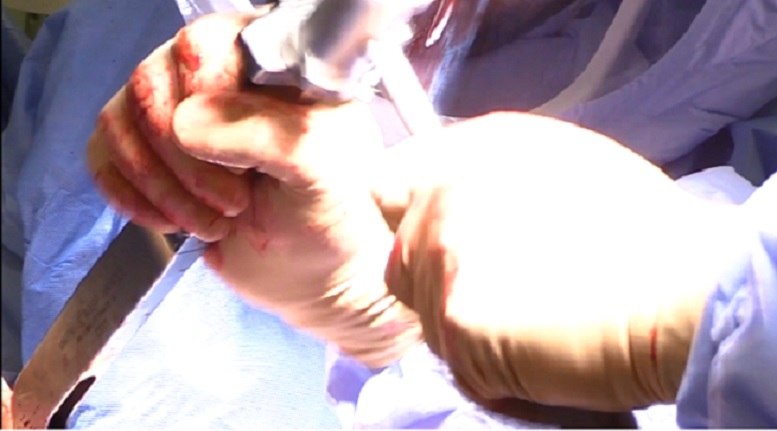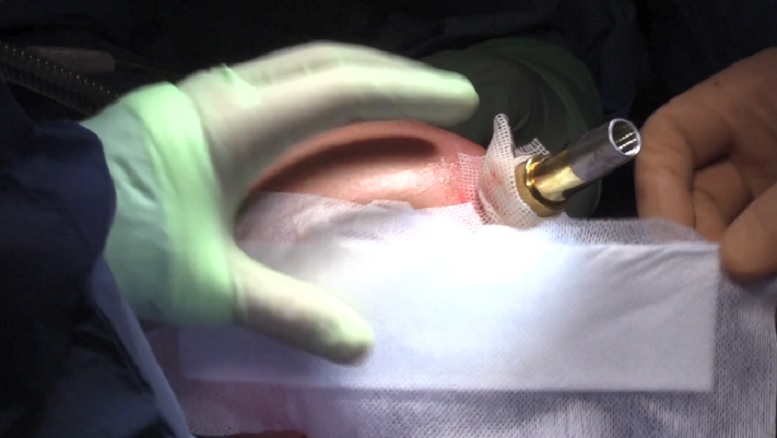A new technique to improve the lives of amputees was performed for the first time in Quebec recently. It involves a titanium rod inserted into the femur and extending outside the body. A prosthesis is then attached to the rod.
This represents a very substantial improvement in the lives of people who previously would have to wear what is known as a socket limb.
Dr. Robert Turcotte (M.D., FRCSC) is an orthopaedic surgeon in Montreal who lead the operation.
The idea of “osseointegration” is not entirely new. Dental implants are perhaps the original example going back to the 1960’s and the understanding that bone can grow around-merge- with a titanium implant to which a prostetic tooth can be attached.

Amputees using the typical “socket” type of artificial limb often experience a variety of discomforts.. The new procedure eliminates them and improves quality of life. (Charles Krupa-AP)
For victims of other injuries, the idea has been expanded to enable attachment of prosthetic noses, ears, fingers and so on.
In 1990, the idea was expanded to the lower limbs and has since been practiced in several countries notably Sweden, the Netherlands and Australia.

Xray showing the rod inserted into the femur (supplied Kia Johnson via CBC)
The concept means the femur, which is designed to the take the weight of the body, can be re-used once again in its original function. It replaces the disadvantages of the typical “socket” type of prosthetic device in which the flesh takes much of the weight and results in sweating, skin irritation, discomfort and problems of maintaining the fit to the leg.

To ensure a proper fit, the channel in the femur often has to be enlarged slightly and straightened through use of a rasp-like instrument. which is hammered into the bone. (MUHC)
Michele Forget was the first to get the procedure done in Canada. Following a motorcycle accident, her leg was amputated above the knee, and for some time she wore the typical artificial limb but with typical limitations and discomfort involved.

The metal rod is inserted into the femur and extends outside the skin. (MUHC)
The implant allows a leg to be attached to the insert and allows for greater freedom of movement, greater stability and participate in a wider variety of activities.

Michele Forget says the procedure has greatly improved her mobility and quality of life.(MUHC)
The McGill University Health Centre will now offer the new procedure to some 150 suitable patients over the next three years thanks to funding from the Quebec Health Ministry which will provide $1.5 million a year during the project.
Additional information
- CTV: A. Luft: Nov 8/19: New surgery gives amputees better quality of life
- MUHC News: Nov 8/19: An innovative project for amputees
- CBC: E. Rankin: Sep 10/19: PharmaCare fight ends in win for BC amputees denied new limbs
- CTV: Favaro/St Philip: Apr 28/19: Ontario amputee calls on province to cover osseointegration







For reasons beyond our control, and for an undetermined period of time, our comment section is now closed. However, our social networks remain open to your contributions.